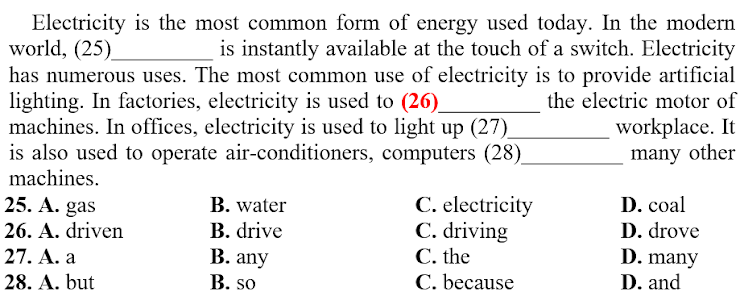Read the following passage and mark the letter A, B, C, or D on your answer sheet to indicate the correct word or phrase that best fits each of the numbered blanks from 31 to 35.
DO SMALLER CLASSES REALLY HELP?
In an experiment in Canada, ten-year-old children were put in classes of four sizes: 16, 23, 30 and 37 children in (31)____ class. Their teachers said that the smaller classes would result in more individual attention and better marks. However, when the children were (32)____, those in the smaller classes didn’t get higher marks than the others, except in mathematics. Moreover, children in the larger classes said they liked school (33)____ as much. Perhaps the most surprising result was the difference between what teachers expected and the actual results obtained. More than 90% of the teachers expected the smaller classes to (34)____ well. After teaching these smaller classes, over 80% of the teachers thought the pupils had done better. However, according to the researchers, nothing of the (35)____ happened. Class size seemed to make a difference only to the teachers’ own attitudes - and not to the results they obtained. (Source: “Longman Tests in Contexts” by J.B. Heaton)
Điền ô số 34
A. make
B. do
C. test
D. obtain


Đáp án B
Giải thích: “do” và “make” là hai cặp động từ thường xất hiện chung trong các đáp án. “Make” với nghĩa là tạo ra cái gì đó. “Do” có nghĩa là làm việc gì